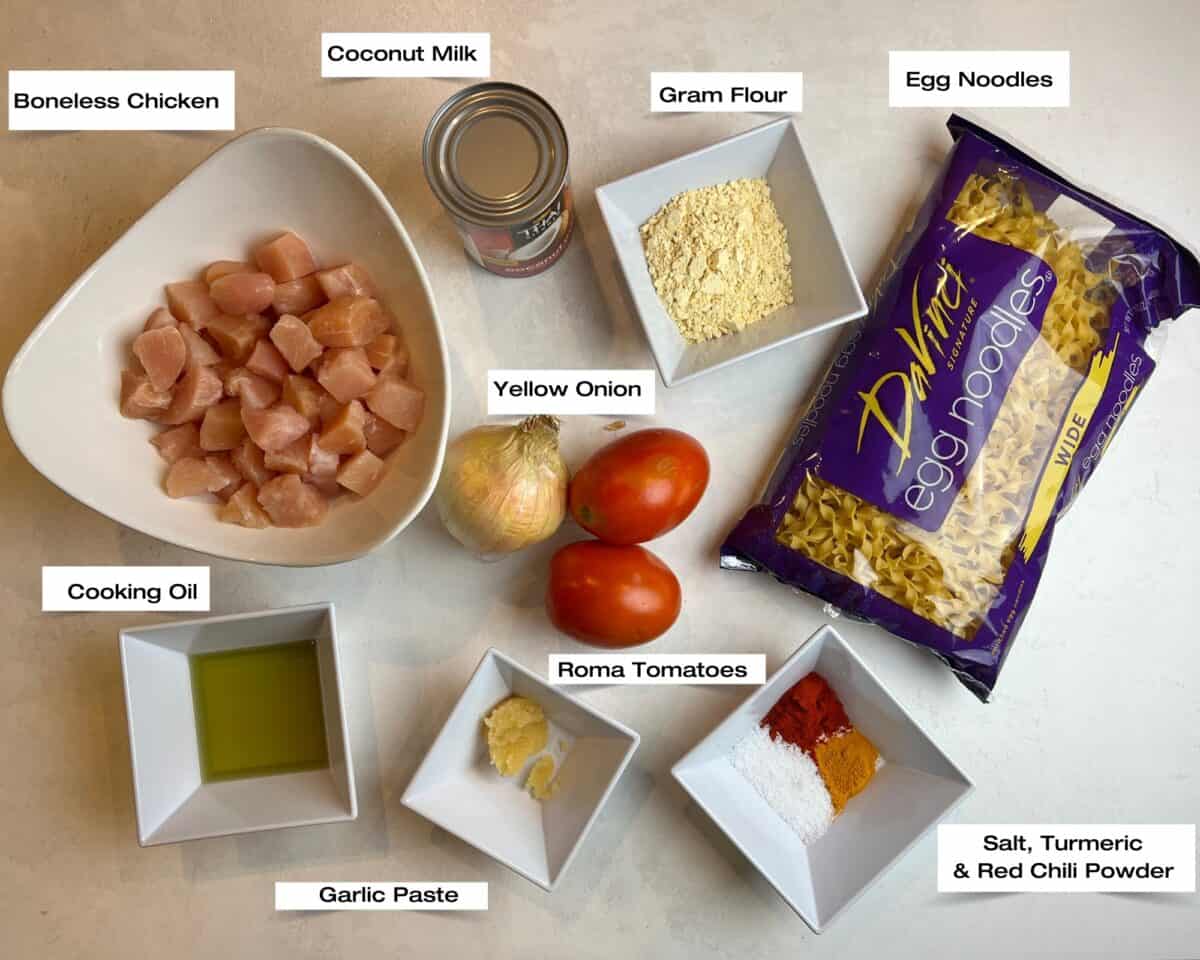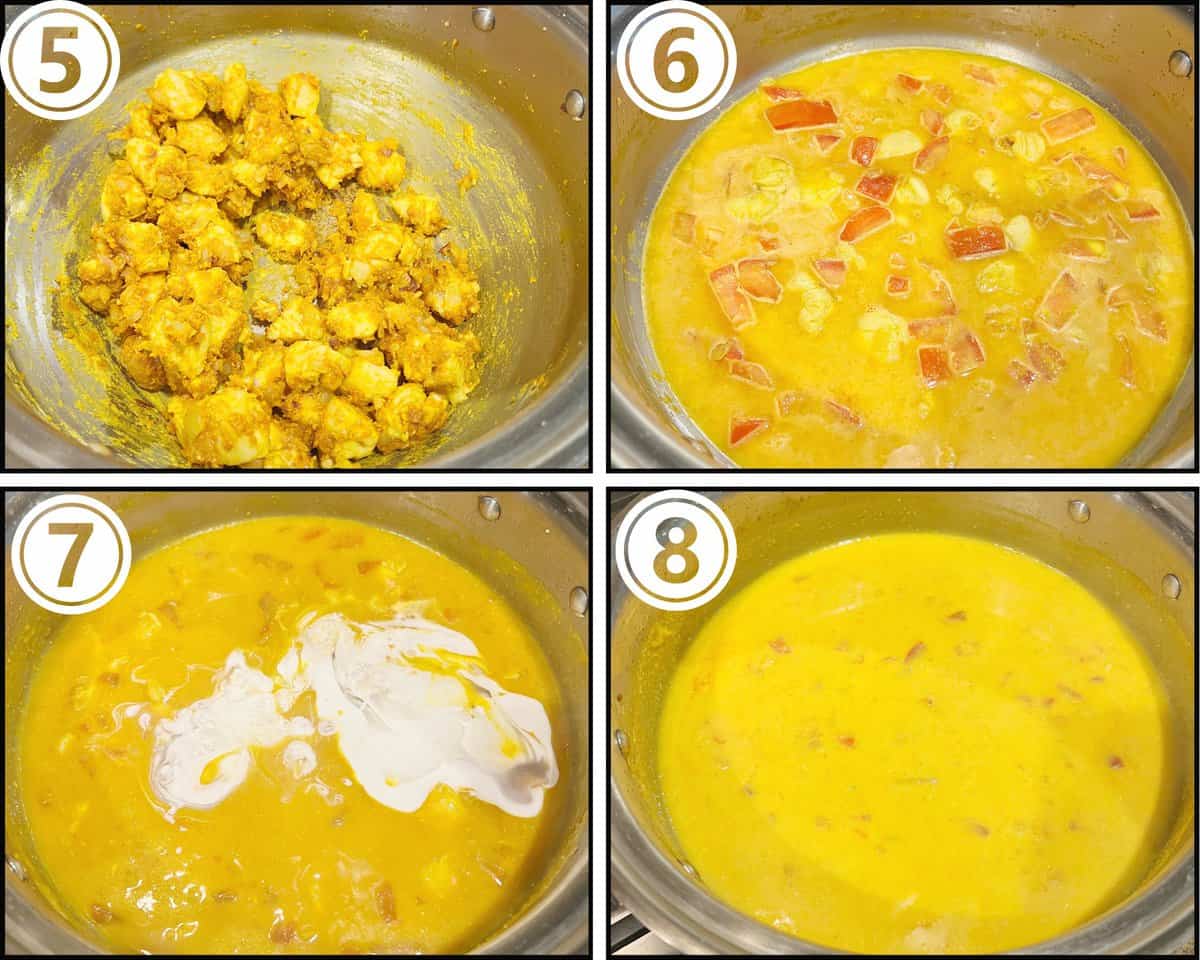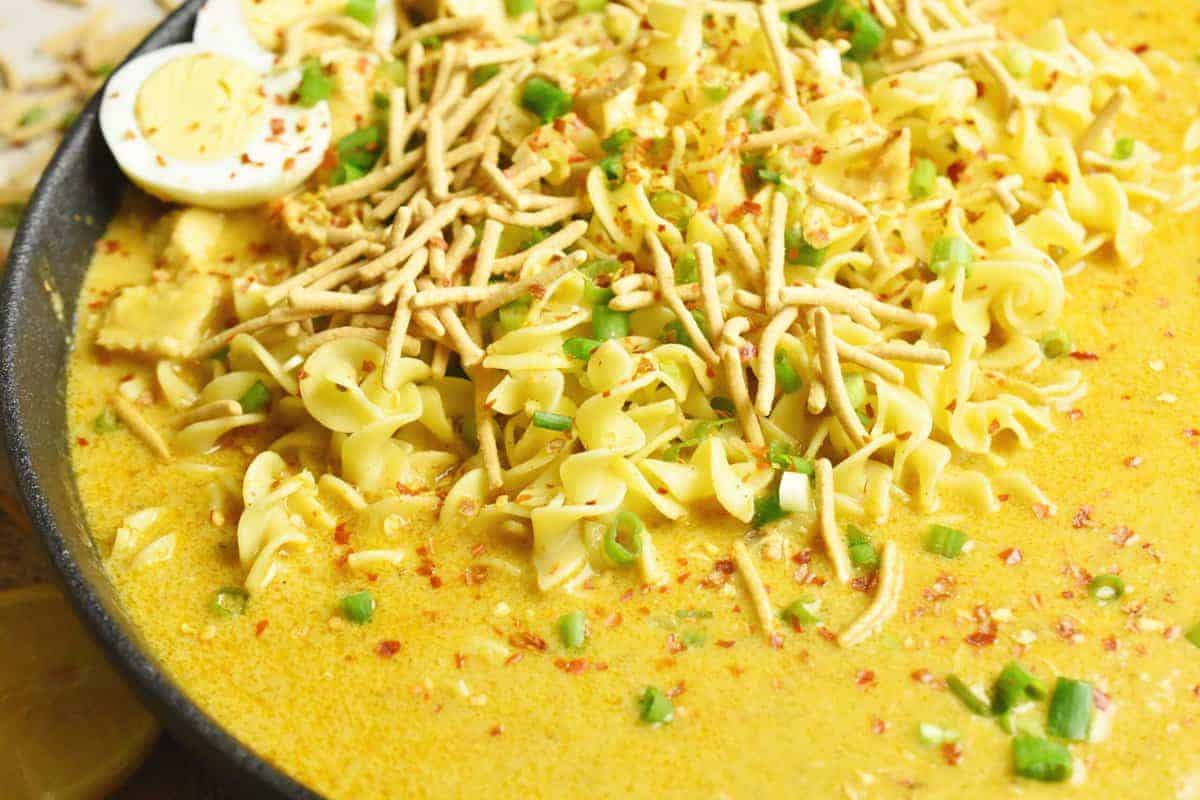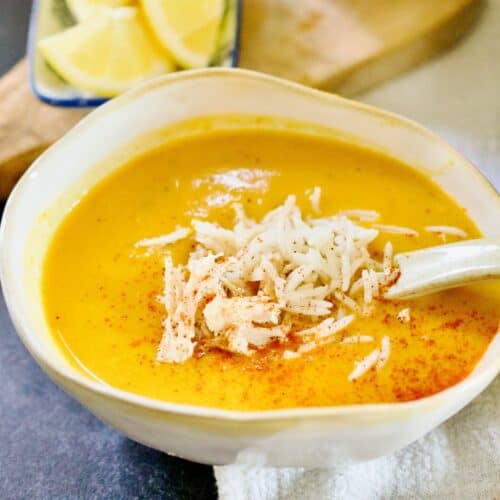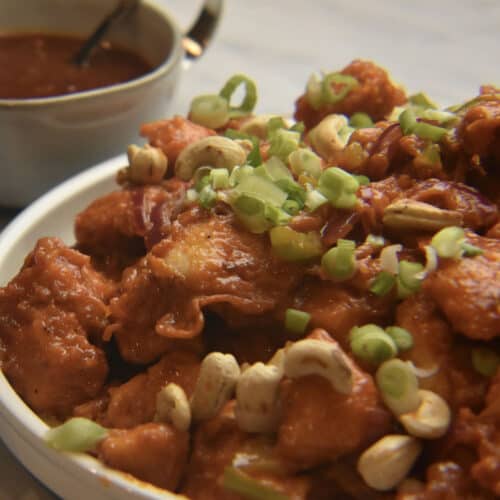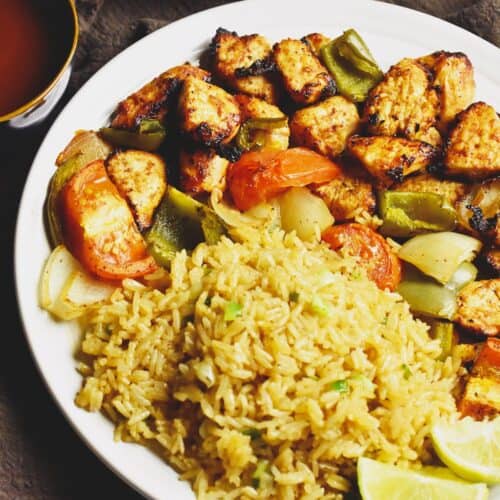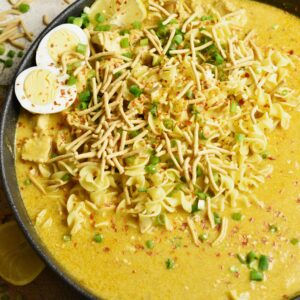Pakistani cuisine has many adaptations of recipes, such as Khow Suey, that have originated from countries that have influenced its history. Some of the most popular ones are authentic Pakistani chicken mulligatawny soup, Indo-Chinese chili chicken, chicken shashlik, and chicken corn soup recipe. This recipe, known as Khow Suey, Khao Suey, Khao Soi, or Khausa, has as many adaptations as names. Today, it’s a very popular recipe in Pakistan and India alike. Whichever version of it you eat, every bite of this coconut milk curry inspired by Burmese Cuisine is pure heaven. The recipe I am sharing with you today was handed down to me by my cousin’s wife. It’s not a traditional Memon or Gujarati version, but it’s one of the easiest versions I’ve come across and will always remind me of her.
Why you’ll love this recipe
One pot recipe - Many Khow suey recipes require a separate preparation of the soup and the curried meat. In my recipe, you’ll cook everything in just one pot, simplifying the cooking and cleaning process. Hearty & filling soup - This is a filling soup. A little goes a long way with the meat, egg noodles, boiled eggs, coconut soup, and toppings. Customizable recipe - The condiments alone allow customization of the soup. But if you want to go a step further, change the type of meat or noodles you use for the recipe and personalize it to suit your taste. Feeds a large crowd - This is a great recipe for feeding a large crowd. It’s very easy to batch and cook it in a larger quantity.
Ingredient notes
Chicken tenderloins - Cubed chicken tenderloins are juicy and work best for the coconut curry. Cooking oil - Any neutral cooking oil such as canola, avocado, sunflower, or peanut, with a high heat index, can be used for this recipe. Onions - I like to use yellow onions for my curries and substitute red onions when I can’t source them. Garlic paste - Homemade garlic paste always tastes better, but if you don’t have time to make it, use store-bought paste. Tomatoes - Not everyone adds tomatoes to their Khow Suey, but the recipe I inherited includes them, and my family loves it this way. Gram flour - Gram flour, known as ‘besan,’ is derived from ground chana dal (split brown chickpeas). Chickpea flour is made from white chickpeas, also known as garbanzo beans, so it is slightly different. For an authentic taste, try and source actual gram flour. Spices - This recipe is full of flavor but is not supposed to be spicy. For this reason, I add a simple mix of salt, turmeric, and red chili powder. Coconut milk - I always try using full-fat coconut milk for my Khow Suey, as the soup tastes silkier and more delicious this way. Egg noodles - Egg noodles are perfect for this curried soup. Their soft and slightly chewy texture holds up well in the curry and doesn’t get mushy like other varieties.
Please see the recipe card at the bottom of this post for the complete list of ingredients with measurements plus recipe instructions.
Substitutions & variations
Alter the spices - Add curry paste to the Khow Suey or try cumin, coriander, or lemongrass to add flavor. Attempt a vegetarian version - You can still enjoy the curry if you’re a vegetarian! Add vegetables such as baby corn, green beans, bell peppers, and other favorites instead of the meat. Make it healthier - Use light coconut milk and whole wheat egg noodles for a healthier version of the Burmese Khow Suey. Experiment with different noodles - Egg noodles are my go-to, but spaghetti is a common pairing with khow suey and tastes just as delicious. Try it for a change. Try a gluten-free version - Rice noodles make an amazing gluten-free version of the Khow Suey. Vary the toppings - Fried onions, fried garlic slices, chili oil, and chopped green chilies all work great as toppings. Get creative and experiment as much as you like with the condiments. Use a different meat - Many people make Khow Suey with beef, and some even make it with shrimp. Switch it up once in a while and try a different version. Add some broth - To give the base more flavor, add broth instead of water as you cook the curry. This will add more nutritional value along with flavor.
Step-by-step instructions
First step - Dice the onion and saute it in preheated oil. It must be cooked to a light brown color before the garlic paste is added and sauteed for 30 seconds. Second step - Add the cubed chicken tenderloins and saute them till they turn opaque. Third step - Add all the spices when the chicken is halfway done and mix until all the pieces are coated. Fourth step - Add the gram flour to this mixture and stir it to roast it.
Fifth step - Roast the chicken, onions, garlic, spices, and gram flour until everything is well roasted and smells nutty. If the gram flour starts to stick to the pan, reduce the heat and splash the mixture with some water at periodic intervals. Sixth step - Add the tomatoes and saute until they start to water. Add the 4 cups of water, cover, and cook till the tomatoes completely dissolve, the chicken is cooked, and the curry thickens. Seventh step - Add coconut milk, cover, and cook for a few minutes to fuse the flavors. Eighth step - Uncover and check the curry to see if it coats the back of the spoon. If it needs to be thicker, cook it uncovered till it’s ready.
Expert Tips
For more Pakistani recipes like this, check out 20 popular Pakistani recipes. If you decide to try this recipe, Please don’t forget to leave a rating and comment below! If you take a picture then tag me on Instagram! Thank You!

